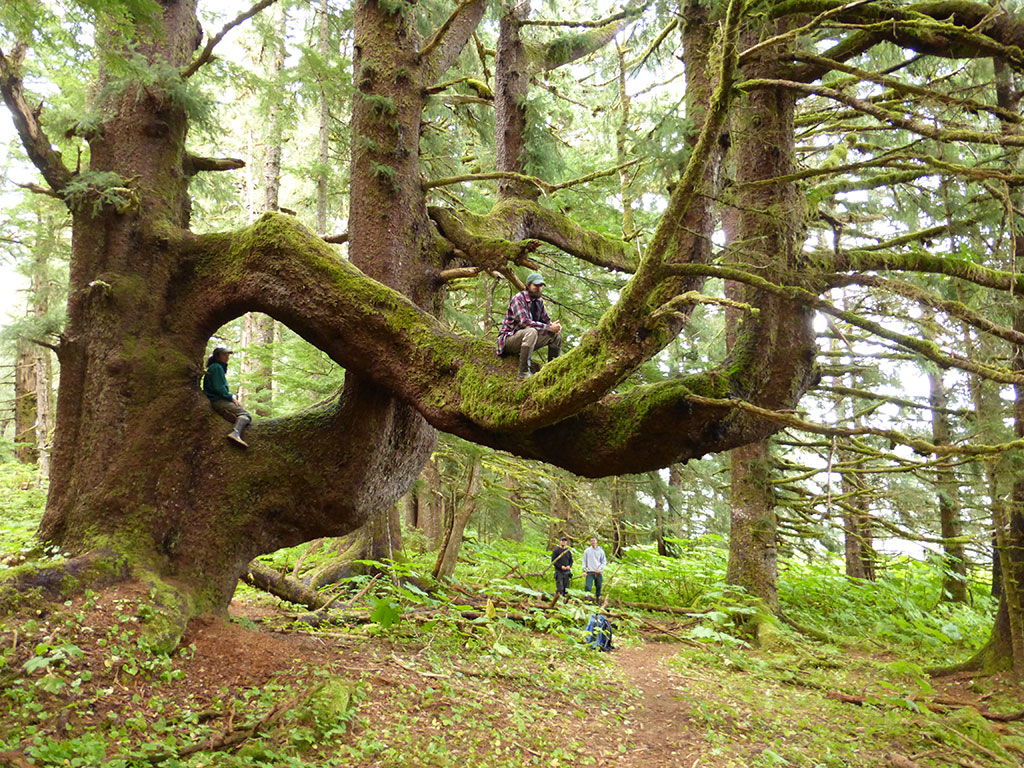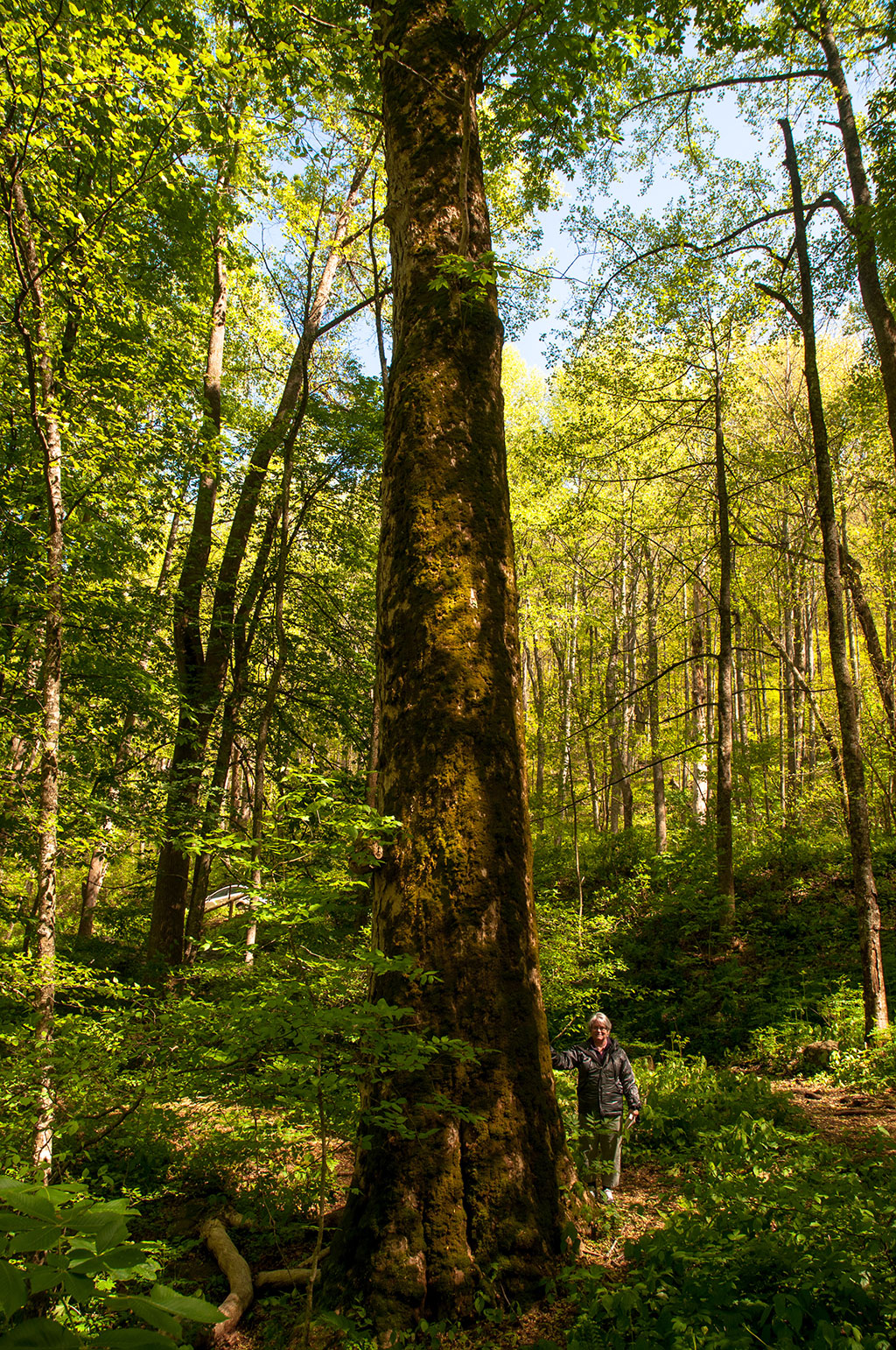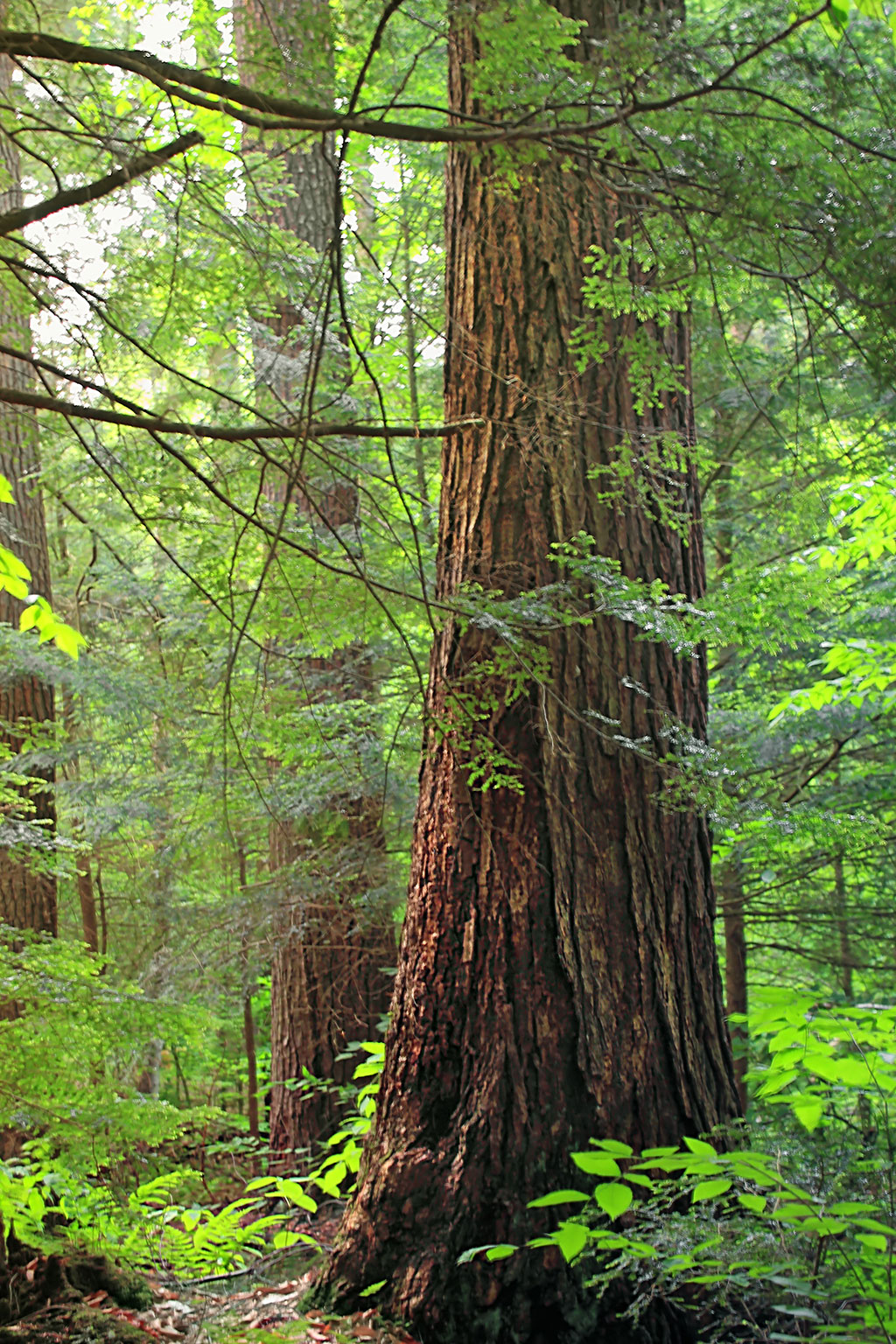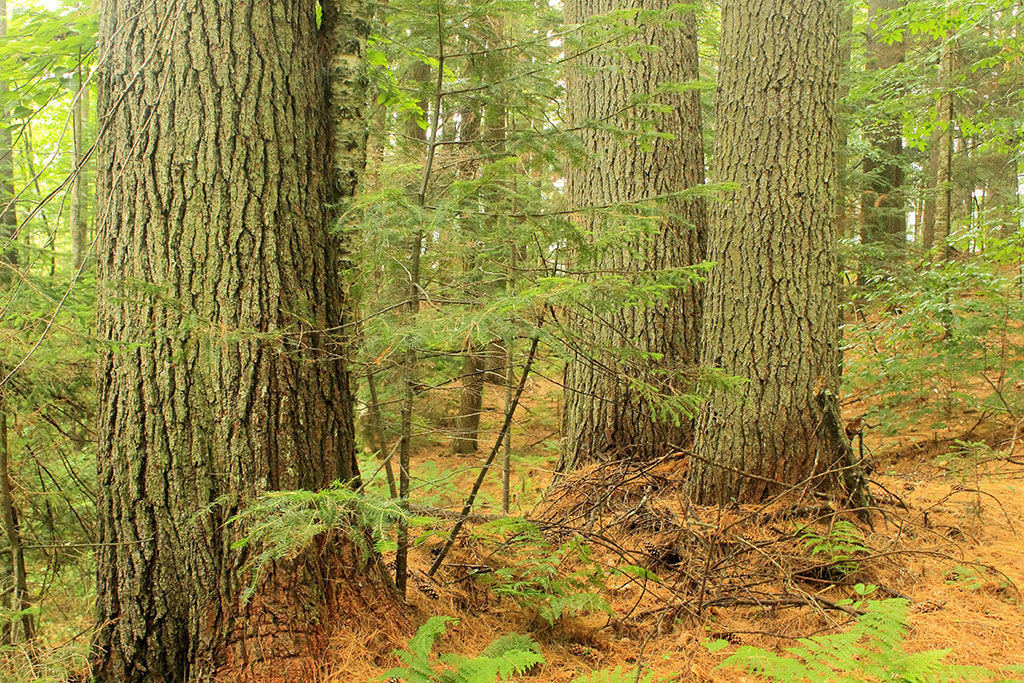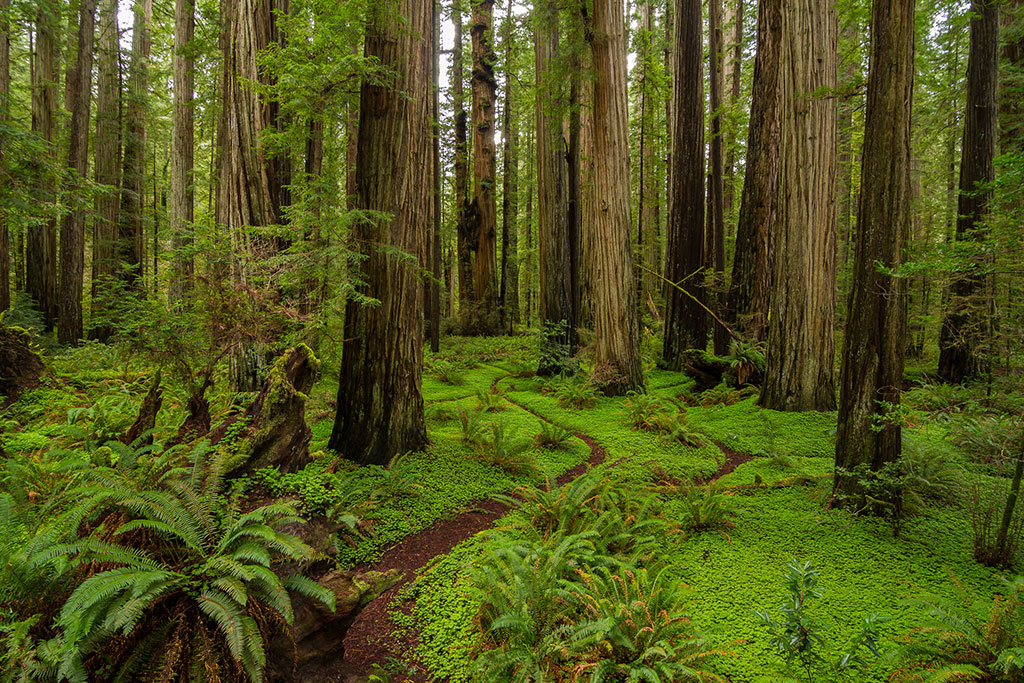By Lindsay Seventko, Communications Intern
There are still extraordinary places left on earth where old-growth trees have been climbing hundreds of feet to the sky for centuries, safely distanced from the watchful eye of development and industry. Here, rare wildlife flourishes, like it did in the breathtaking and doubt-inspiring accounts of Lewis and Clark’s first expeditions, off the beaten path of destinations and away from typical tourists.
However, stands of ancient trees have also stood among us, sometimes largely unnoticed, as recreationalists trek by with eyes focused on the trail, river or rock ledge.
Whether you’d rather explore deep within the wilderness where few venture, or enjoy a simple walk in the outdoors, there are beautiful, old-growth forests waiting to be visited. Put one of these areas on your list of places to explore, and who knows, maybe the next Champion Big Tree is waiting to be discovered.
1. Tongass National Forest, Alaska
Tongass National Forest is home to some of the oldest trees on earth — many of them dating back more than 800 years. Spruce, cedar and western hemlock trees stretch more than 200 feet into the sky and reach nearly 12 feet in diameter at chest level. These impressive trees mark the section of southeast Alaska that makes up 30 percent of the temperate rainforests on earth and one of the last great marvels of biodiversity and natural abundance. Here, some of the rarest wildlife on earth abounds — bald eagles, grizzly bears, Alexander Archipelago wolves, the Goshawk and the Marbled Murrelet. Ancient glaciers feed the Icy Straight, a winding river that delivers three times as much essential organic carbon to the ocean than the Amazon River does, supporting lush marine life from krill to sea lions, whales and a range of salmon species. Exploring the Tongass can be a short hike or a deep wilderness trek, but the time to visit is now, as the forest’s timber harvesting plan threatens the remaining old-growth trees and the health of the wildlife habitat.
2. Chattahoochee National Forest, South Carolina and Georgia
Chattahoochee National Forest is home to massive hemlocks, pines and hardwoods, with stately trees stretching more than 160 feet tall and 3 feet in diameter. Scattered across the slopes of Medlin Mountain in South Carolina, the massive trunks contrast with the heavily logged bank of the East Fork of the Chattooga River. Towering canopies shelter dense, luscious rhododendron bushes, wildflowers and endangered plants such as the rattlesnake plantain and mountain camellia.
The area used to be the end of what was a large section of old-growth forest across the entire watershed, where the average tree height was a record 160 feet. Due to the knotty nature of the wood, timber harvesters avoided the area and the trees were left to flourish for centuries, some up to 600 years. It wasn’t until the woolly adelgid, an invasive insect, began covering the area and the hemlocks were put into shock and, ultimately, began dying off. Some of the old stands remain, however, covering the mountainsides. Spring is the time to explore the trails, when the solitary viereo, black-throated green warbler and Blackburnian warbler nest in the hemlock branches and rhododendron bushes bloom underneath the cover.
3. Heart’s Content Recreation Area, Allegheny National Forest, Pennsylvania
Nestled within a small 120-acre area of the Allegheny National Forest, some of the largest old-growth trees in North America grow alongside an easily accessible, one mile trail. The Heart’s Content Recreation Area is home to a white pine that is more than 900 cubic feet, as well as a 300-year-old hemlock and beech. This preserve is a great way to view an old, beautiful forest and its wildlife without traipsing deep within a wild area.
4. Adirondack State Park, New York
The Adirondack wilderness in New York is home to about 300,000 acres of ancient trees scattered about the vast wilderness. Some of the largest hardwoods in the world can be found dotting remote ridgelines and lining secluded rivers deep within the park, where logging wasn’t able to disrupt centuries of steady growth. However, some select stands have remained in accessible areas. A few minutes’ walk on the Ampersand Mountain trailhead leads to statuesque hemlocks, magnificent sugar maples and gangly yellow birch that have been growing for nearly 400 years.
5. Jedediah Redwoods State Park, California
A list of old-growth forests wouldn’t be complete without mentioning California’s awe-inspiring redwoods, but the Jedediah Smith Redwoods State Park in the northernmost section is especially impressive. A trip begins with one of the most beautiful drives in the state — winding through towering redwoods over rough gravel for 10 miles and ending deep within the ancient forest. Miles of remote trails explore stunning waterfalls, rare wildlife and, of course, gigantic trees. Here, two massive redwoods entwine each other into one massive trunk that stretches 40 feet across at the bottom. The park is also the launching pad for discovery of the fabled Grove of Titans, a group of famously massive trees whose location isn’t made publicly available in order to protect them from damage.
Across the country, there are still groves of old-growth forests deep within a wilderness valley, protected in a recreational area or even in someone’s backyard. Whether you want to simply walk and appreciate an ancient forest, or go off on an expedition to find a new champion tree, there is an area of old forest waiting, with trees continuing their centuries long climb to the sky.
